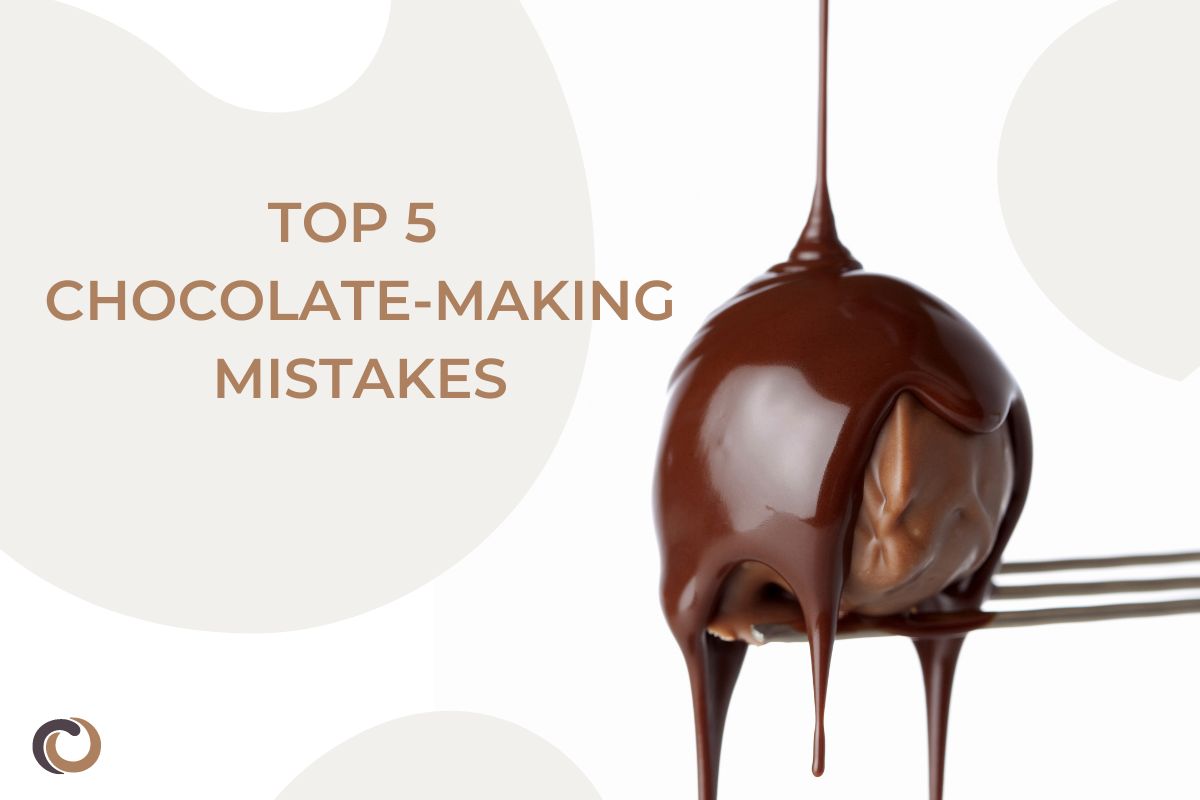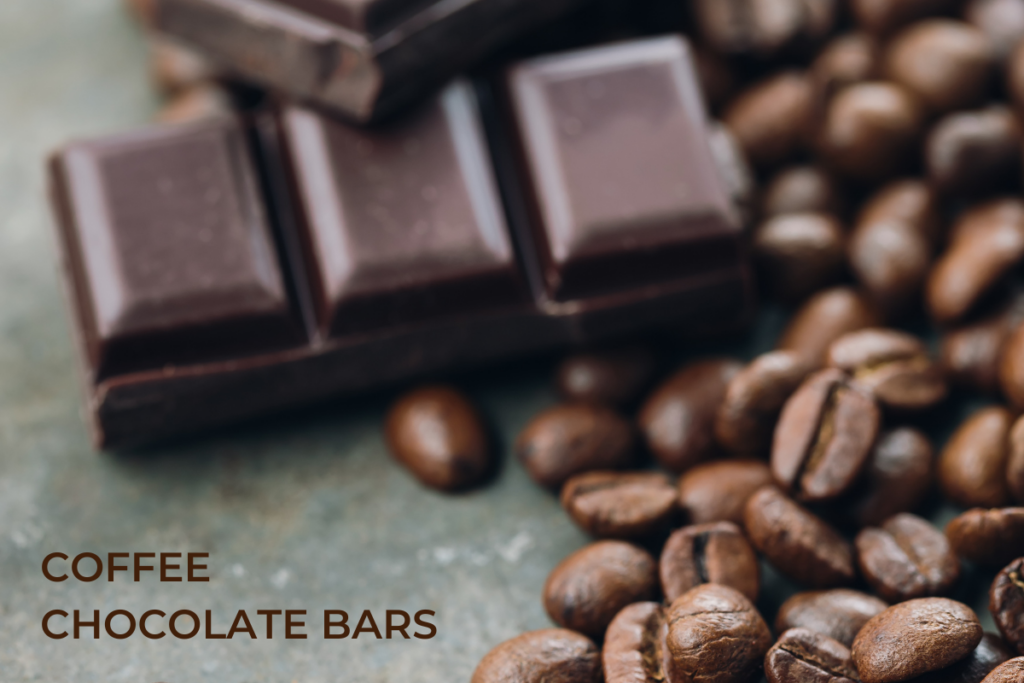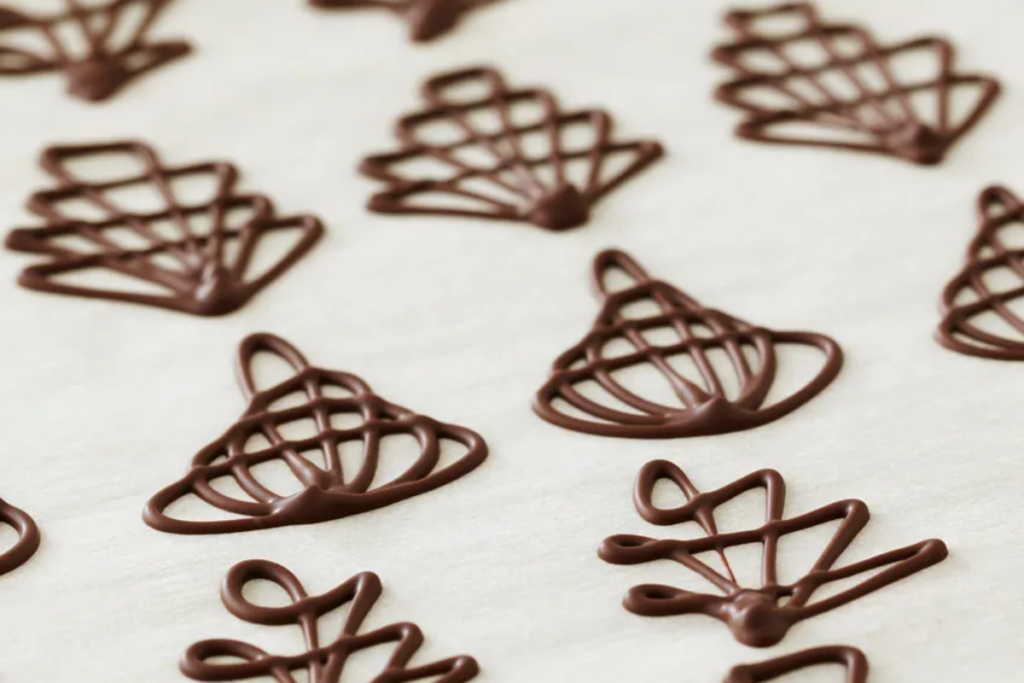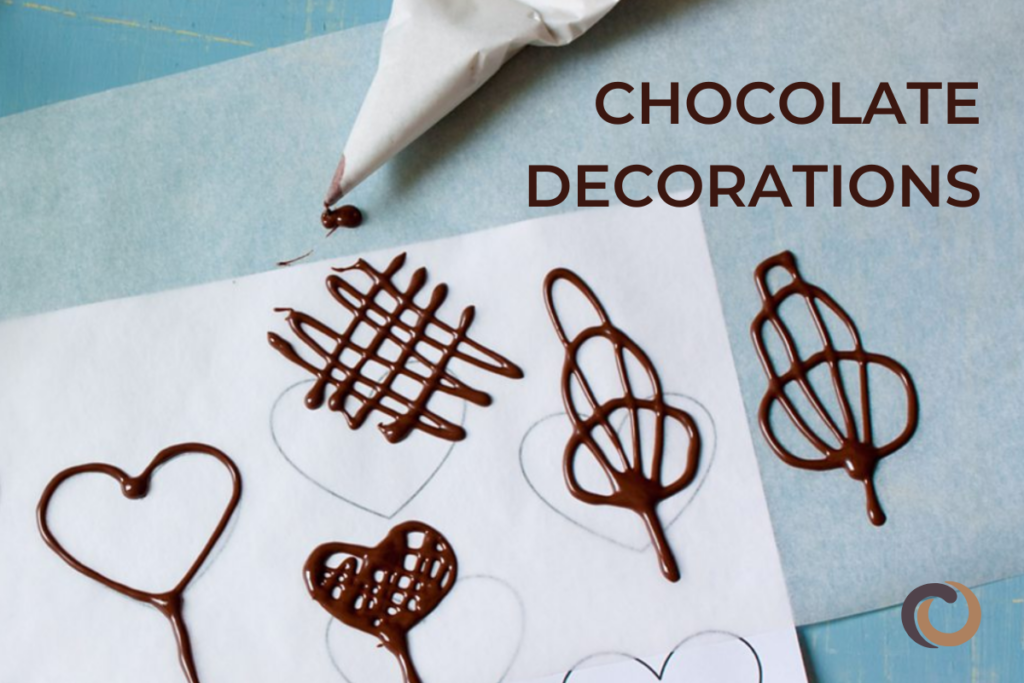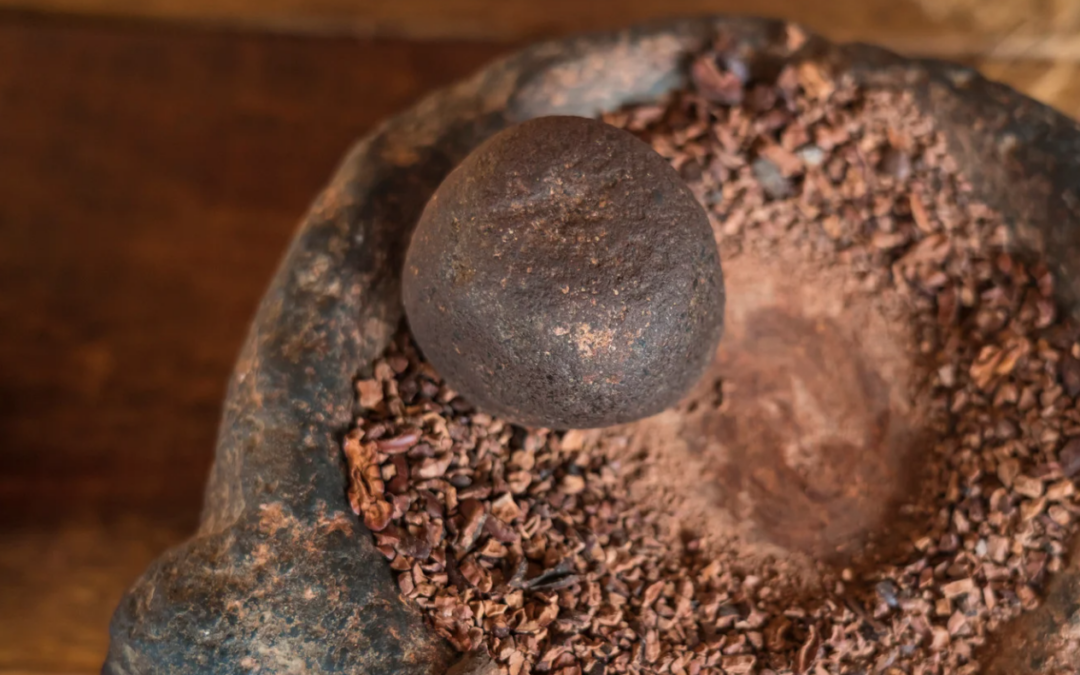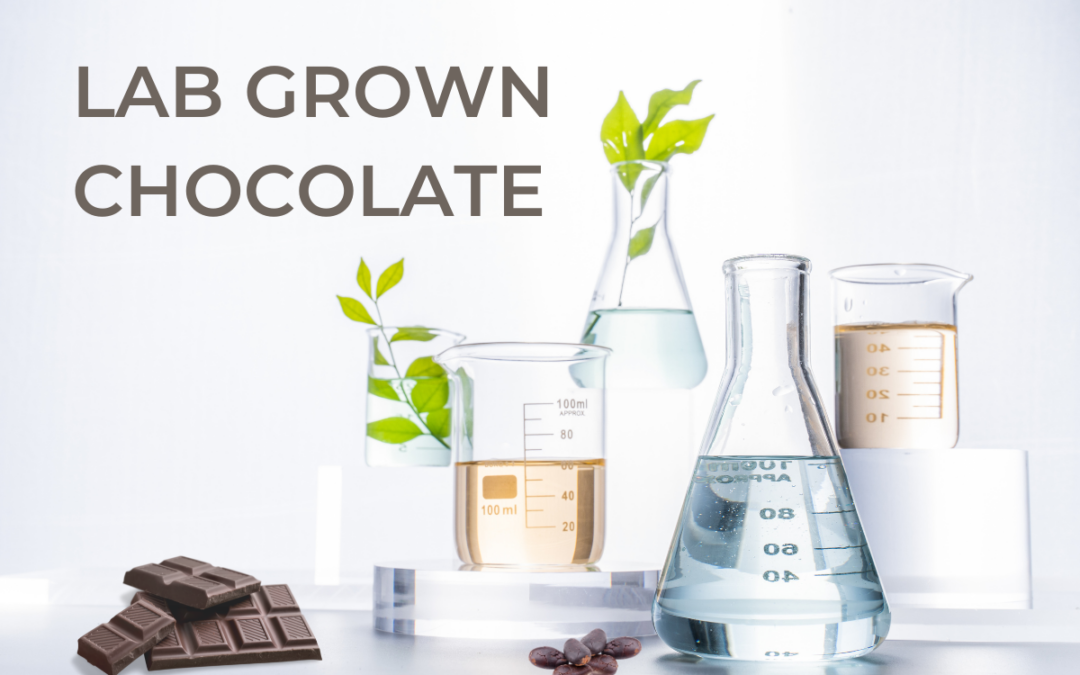Making chocolate at home can be fun and rewarding, but it has its challenges. Even experienced makers can make mistakes that turn smooth, glossy chocolate into a clumpy or streaky mess. In this article, we’ll review the top five mistakes people make when making chocolate and how to avoid them. Whether you’re a beginner or looking to improve or a seasoned pro, these tips will help you get perfect results every time.
Top 5 chocolate-making mistakes
Mistake 1: Tempering incorrectly
- Issue: Tempering involves heating and cooling chocolate to specific temperatures to stabilize the cocoa butter crystals. Incorrect tempering can lead to dull, streaky, or poorly textured chocolate.
- Solution: Use a thermometer to monitor temperatures precisely. Follow the tempering method specific to the type of chocolate you are working using (dark, milk, or white).
Mistake 2: Allowing moisture to come into contact with chocolate
- Issue: Even a small amount of water or steam can cause chocolate to seize, turning it into a lumpy, grainy mess.
- Solution: Keep your workspace dry and avoid using wooden spoons or wet utensils. Dry all your bowls, molds and tools completely.
Mistake 3: Storing ingredients improperly
- Issue: Improper storage can cause ingredients to go bad or cause processing problems. They can absorb moisture, lose flavor or go rancid faster than usual.
- Solution: Store all ingredients in air-tight containers and keep them in an environment without significant temperature fluctuations. Cool, dark and dry storage locations are preferable.
Mistake 4: Cooling improperly
- Issue: Quickly cooling chocolate can cause it to temper (crystallize) improperly, leading to a grainy texture and a lackluster finish. Not cooling enough can also lead to temper issues.
- Solution: Don’t cool chocolate in a freezer. For regular size bars or objects, allow the chocolate to cool at room temperature. If you are working with a larger object or a stack of molds, make sure to put them in a refrigerator, otherwise there’s a chance that they lose their temper.
Mistake 5: Overheating chocolate
- Issue: Exposing chocolate to high temperatures can cause it to scorch or burn, resulting in a bitter taste and grainy texture.
- Solution: Melt chocolate slowly and gently using a double boiler or a microwave in short intervals, stirring frequently.
Questions and Answers About Making Chocolate
Can I use regular pots for melting chocolate?
Yes, you can use regular pots for melting chocolate, but there are key considerations for success. Use a double boiler by placing a heatproof bowl over simmering water, ensuring it doesn’t touch the water, to prevent scorching.
Avoid moisture to prevent the chocolate from seizing; ensure all equipment is dry and be cautious of steam. Use heavy-bottomed pots for even heat distribution and stir constantly to prevent scorching. Melt chocolate in small batches for better control. Following these guidelines will help you achieve smooth, glossy, and delicious melted chocolate.
What are the signs of overheated chocolate?
Overheated or “scorched” chocolate can be identified by several signs: a thick and lumpy texture, a burnt aroma or taste, separation of cocoa butter from the cocoa solids, and clumping with small lumps that do not dissolve even with stirring. To avoid these issues, always melt chocolate slowly and monitor its temperature carefully.
How do I fix seized chocolate?
One way to salvage seized chocolate is by making a ganache. Gradually add warm liquid, such as hot cream or milk, to hydrate the chocolate and smooth out the clumps. For more detailed information and additional tips, check out our full article on fixing seized chocolate.
What would I do if my chocolate didn’t temper properly?
While it may be additional work, poorly tempered chocolate can be re-melted and re-tempered. Since tempering is a process of controlled crystallization, and not a chemical change that occurs in the chocolate, you can re-melt and re-temper as many times as you need.
What type of chocolate is best for tempering?
When tempering chocolate, the best types are those with high cocoa butter content and no additional fats other than cocoa butter. Couverture chocolate is particularly ideal for tempering because of its high cocoa butter content, which facilitates achieving a smooth, glossy finish with a satisfying snap. This type of chocolate is widely favored among professional chocolatiers for its ease of use and performance.
How long can homemade chocolate be stored?
Homemade chocolate can usually be kept for several weeks to a year, depending on the ingredients and how it’s stored. A simple dark chocolate can easily be stored for a year (but chances are that it won’t last that long without being eaten). If the chocolate contains inclusions, such as nuts or dried fruits, the shelf life will decrease because the added ingredients may not stay fresh as long as the chocolate. If the chocolate has a filling, such as a ganache, or contains milk, the shelf life will be greatly shortened. In all cases, for best results, store your chocolate in a cool, dry place away from direct sunlight and strong odors. While refrigeration can extend its shelf life, be mindful of potential condensation when taking it out since that can cause spots on the surface of the chocolate, called sugar bloom.
For more great articles and recipes, check out the rest of our CocoTerra blog.
If you have any questions or comments, feel free to contact us through our social media channels. We are @cocoterra_co on Instagram and Pinterest and @cocoterraco on X (aka Twitter) and Facebook.

